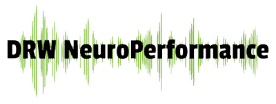CALL TODAY: 604-771-1344

The Unique Benefits of Neurofeedback for a Wellness Practice
A practitioner may choose to incorporate the unique benefits of neurofeedback for a wellness practice for a variety of reasons, as it can offer several potential benefits for clients seeking to improve their overall well-being. Neurofeedback, also known as EEG biofeedback, is a non-invasive technique that aims to help individuals regulate their brain activity by providing real-time feedback. Here are some reasons why a wellness practitioner might use neurofeedback in their practice:
- Emotional Regulation: Wellness practitioners may use neurofeedback to assist clients in regulating their emotions. It can help individuals better control mood swings, reduce symptoms of conditions like depression and anxiety, and enhance emotional resilience.
- Improved Mental Clarity and Focus: Neurofeedback can enhance cognitive function, including concentration and attention. Because of this, it can be valuable for individuals looking to boost productivity and performance, such as students or professionals.
- Stress Reduction: Neurofeedback can help individuals learn to manage stress by providing them with insights into their brain activity patterns. By recognizing and regulating stress-related brain patterns, clients may experience reduced anxiety and improved overall mental well-being.
- Sleep Improvement: Neurofeedback can be beneficial for clients struggling with sleep disorders. By training the brain to achieve more balanced and restful sleep patterns, individuals may experience improved sleep quality and overall energy levels.
- Enhanced Athletic Performance: Some wellness practitioners may use neurofeedback to help optimize an athlete’s mental state and focus. This can lead to better sports performance and quicker recovery from injuries.
- Pain Management: Neurofeedback has been explored as a complementary therapy for individuals dealing with chronic pain. By altering pain perception and improving coping mechanisms, it can potentially reduce the reliance on pain medications.
- ADHD and Behavioral Issues: Wellness practitioners may incorporate neurofeedback to assist clients, particularly children and adolescents, with attention-deficit/hyperactivity disorder (ADHD) or behavioral issues. It can help individuals learn to regulate their attention and behavior more effectively.
- Personal Growth and Peak Performance: Neurofeedback is not limited to addressing specific issues; it can also be used for personal development and achieving peak performance in various areas of life, from artistic pursuits to personal relationships.
- Holistic Approach: For wellness practitioners who embrace a holistic approach to health and well-being, neurofeedback can be seen as a valuable tool to address the mind-body connection. It complements other practices such as meditation, yoga, and nutritional counseling.
It’s essential for wellness practitioners to have appropriate training and certification to ensure safe and effective use in their practice. Additionally, they should assess each client’s needs and goals to determine whether neurofeedback is the best intervention for their situation.
